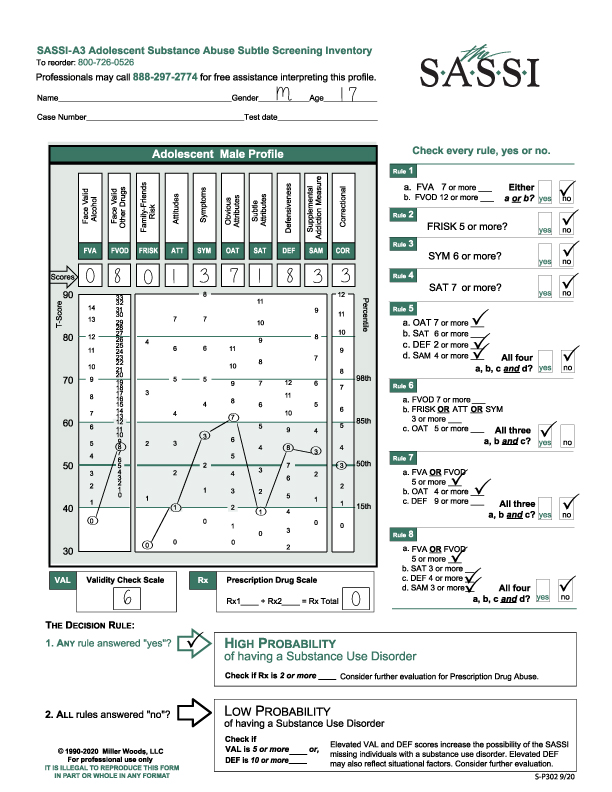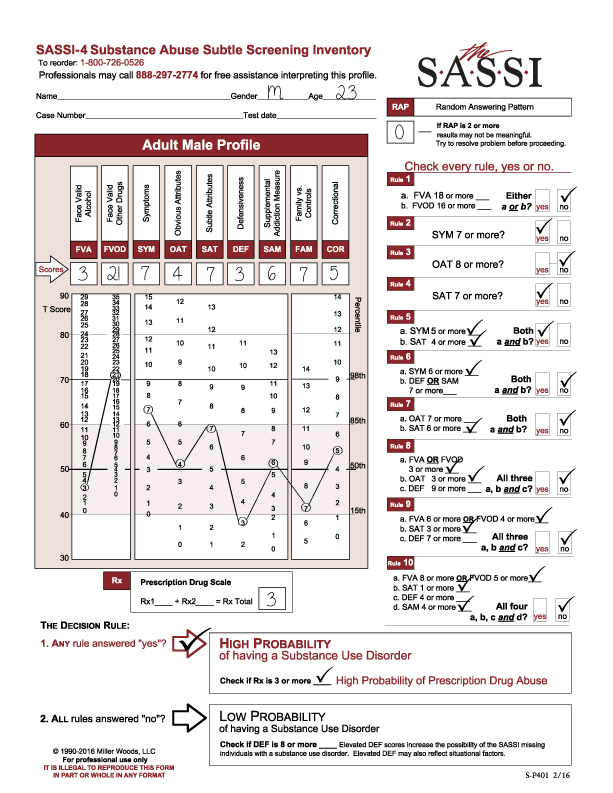SASSI Online is our web-based platform that supports the digital administration of the Adult SASSI-4, Adolescent SASSI-A3, and Spanish SASSI.
In this edition of SASSI Online Tips and Tricks we highlight the steps to view a client’s completed SASSI questionnaire results. When a client completes the questionnaire, responses are sent to the scoring server for immediate results. You will receive an email notification that the questionnaire is complete, with instructions on how to view the report from the Account Dashboard. For security reasons, report results are not sent via email.
To view the report and questionnaire responses you must be logged in to your dashboard, and locate the client on your My Clients tab. To view the report or questionnaire responses for your client, click on their Client ID. In the window, select what you would like to view from the following options: View Report or View Questionnaire.
The SASSI report includes a graph of the client’s scale scores, the outcome of the decision rules based on the client’s responses, and a narrative report on the client’s profile. The completed questionnaire contains all questions asked, the client’s responses, and the scale scores.
Sample SASSI Online Reports are available here:
- Sample Adult SASSI-4 SASSI Online Report
- Sample Adolescent SASSI-A3 SASSI Online Report
- Sample Spanish SASSI Online Report
If you are not currently using SASSI Online and would like to experience the features of the digital platform, create an account at www.sassionline.com. If you already have an account, let us know if you have any suggestions for our next edition of SASSI Online Tips and Tricks. As a bonus for reading this blog post to the end, reach out to us at blog@sassi.com, with the code phrase: Report Results, to request two free SASSI Online administrations!



